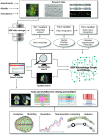The Human Brain Project-Synergy between neuroscience, computing, informatics, and brain-inspired technologies
- PMID: 31260438
- PMCID: PMC6625714
- DOI: 10.1371/journal.pbio.3000344
The Human Brain Project-Synergy between neuroscience, computing, informatics, and brain-inspired technologies
Abstract
The Human Brain Project (HBP) is a European flagship project with a 10-year horizon aiming to understand the human brain and to translate neuroscience knowledge into medicine and technology. To achieve such aims, the HBP explores the multilevel complexity of the brain in space and time; transfers the acquired knowledge to brain-derived applications in health, computing, and technology; and provides shared and open computing tools and data through the HBP European brain research infrastructure. We discuss how the HBP creates a transdisciplinary community of researchers united by the quest to understand the brain, with fascinating perspectives on societal benefits.
Conflict of interest statement
The authors have declared that no competing interests exist.
Figures


References
-
- D'Angelo E, Wheeler-Kingshott CG. Modelling the brain: Elementary components to explain ensemble functions. Riv Nuovo Cimento. 2017;40(7):297–333. 10.1393/ncr/i2017-10137-5 WOS:000406931800001. - DOI
Publication types
MeSH terms
LinkOut - more resources
Full Text Sources
Miscellaneous

